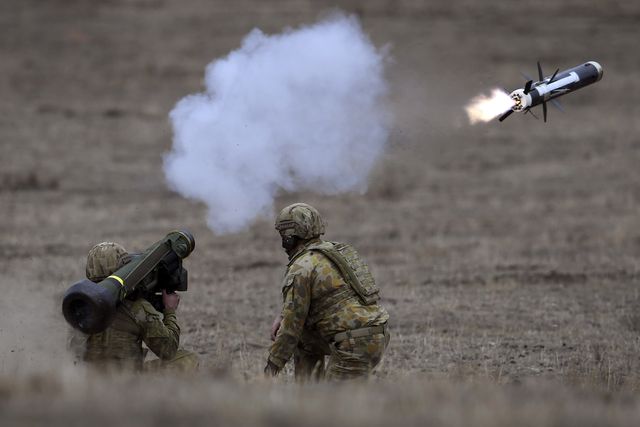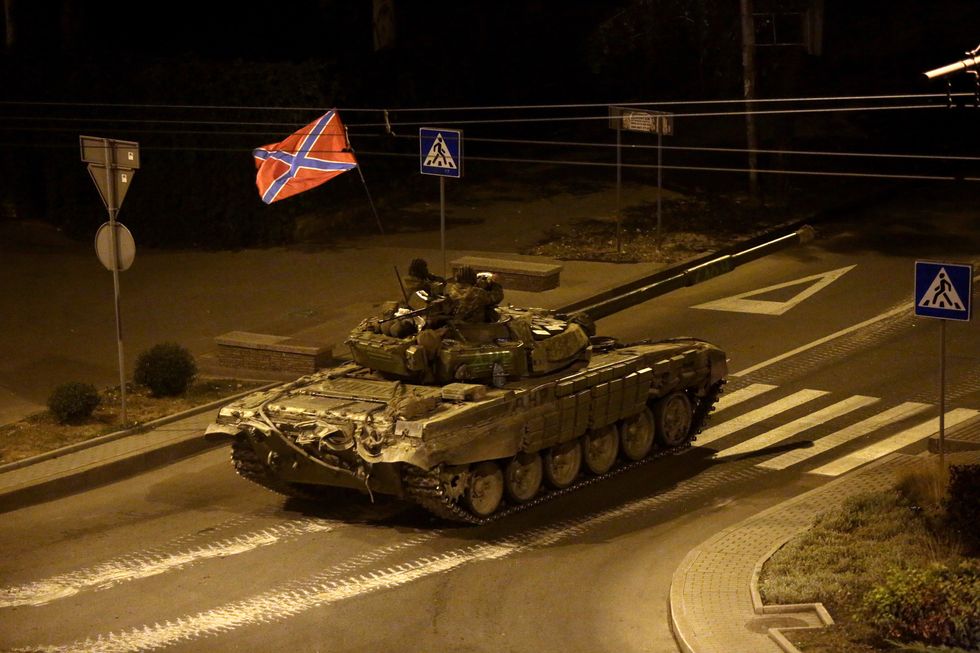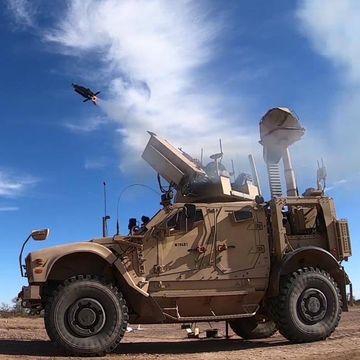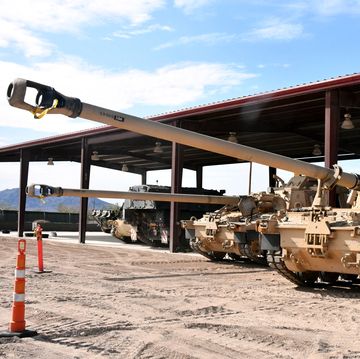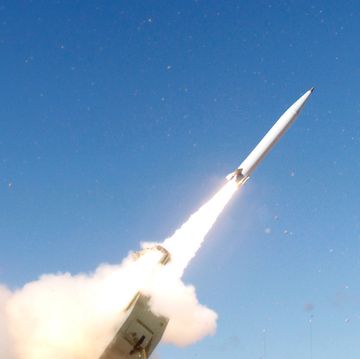- This week Washington D.C. was rocked by allegations that the President of the United States tried to tie the sale of Javelin missiles to Ukraine for dirt on his political rivals.
- The simple, easy to use anti-tank missile is Ukraine's weapon of choice in its undeclared war against Russia.
- In May 2018 Ukraine purchased 210 Javelin missiles and 37 launchers from the United States for an estimated $47 million.
The Javelin missile is an unlikely weapon to be thrust into the political spotlight.
In a call with the Ukrainian President Volodymyr Zelensky on July 25, 2019, President Donald Trump tied together the Ukraine's purchase of Javelin missiles with an investigation into his political rivals. While the true nature of this phone call has yet to be determined, the effectiveness of the weapon is an absolute certainty. The Javelin’s features—and Russia’s tank armies—made it a very desirable weapon for Ukraine, a country that is suffering an undeclared war with Russia from 2014 to the present day.
In the 1980s, the U.S. Army’s main threat was Soviet Union. U.S. forces in Europe trained to operate outnumbered, holding their ground against waves of Soviet T-72 and T-80 main battle tanks, as well as BMP-2 infantry fighting vehicles. The main anti-tank weapon, issued to every U.S. infantry squad, was the M-47 Dragon anti-tank guided missile.
The Dragon was bulky and unreliable but it could penetrate the frontal armor of both the T-72 and T-80. The optically guided missile required the shooter to hold an enemy tank steady in his crosshairs but had a maximum range of just 1,000 meters. This meant the shooter had to launch and guide the missile within range of a Soviet tank’s machine guns, and incoming fire could throw the missile off target.
The introduction of Soviet reactive armor—explosive tiles bolted onto the outside of a tank to blunt anti-tank missiles—made Dragon obsolete. The Army issued a requirement for a replacement known as AAWS-M, or Advanced Anti-Tank Weapon System—Medium. Texas Instruments and Martin Marietta (now known as Lockheed Martin) won the contract, and the first missile test took place in 1991. Initial tests were positive and the FGM-148 Javelin missile went into full production in 1994.
Javelin is a much better missile system that Dragon in almost every way. A shoulder launched weapon, Javelin uses an imaging infrared system to detect and lock onto tanks at distances of up to 4,750 meters--much, much farther than Dragon. Once the operator locks onto a tank and initiates the launch sequence, a small rocket motor kicks the missile out of the launch tube and into the air, whereupon the main motor ignites and sends the missile downrange.
Unlike Dragon, Javelin has two attack modes. The first mode is direct attack, where the missile flies straight toward the enemy tank. The missile has not one but two warheads--the first to trigger the reactive armor tiles, neutralizing them, and the second to penetrate the tank’s main armor belt. A second mode sends Javelin racing upward to an altitude of 500 feet, whereupon it dives down onto the top of the tank where armor protection is thinnest.
One major drawback of Dragon required the gunner to hold very still, keeping the tracker’s crosshairs centered on an enemy tank until impact. This was never really all that realistic as the noise and stress of combat, as well as enemy fire, could easily cause the gunner to break his visual lock. Javelin on the other hand is a “fire and forget” missile: once launched the missile’s brain takes over guiding it to target. A Javelin gunners can shoot his or her missile and then make a run for it, retreating or relocating to an alternate firing position.
Russian Army regular units and local militias operate tanks and armored vehicles, including the new T-90 main battle tank, T-72 tank, and the latest version of the T-72, the T-72B3. Other vehicles include BMP-2 and BMP-3 infantry fighting vehicles, MTLB armored personnel carriers, and BMD airborne infantry fighting vehicles. Russia’s large number of tanks and armored vehicles threatens Ukraine not only in the limited fighting around the Donbas and Crimea regions but also if Russia were to stage a general invasion of Ukraine itself.
In May 2018 Ukraine purchased 210 Javelin missiles and 37 launchers from the United States for an estimated $47 million. Properly used—and Javelin is very easy to use—that could mean the destruction of scores of armored vehicles should Russian forces roll west again. It could lead to a string of humiliating, demoralizing defeats for Russian forces and their proxies.
The question is: Will Ukraine get more any time soon?

Kyle Mizokami is a writer on defense and security issues and has been at Popular Mechanics since 2015. If it involves explosions or projectiles, he's generally in favor of it. Kyle’s articles have appeared at The Daily Beast, U.S. Naval Institute News, The Diplomat, Foreign Policy, Combat Aircraft Monthly, VICE News, and others. He lives in San Francisco.
